I fell in love with Marcus Buckingham. No, not with the married Brit himself. For popularizing the strengths-based movement that began at Gallup.
As soon as I heard of the concept of focus on your strengths and outsource the rest, I liked it. It made great sense.
Do you know your strengths? My No. 1 strength, according to the book/quiz known as StrengthsFinder 2.0, is input, "a craving to know more." This deep-seated curiosity served me well when I was a journalist and still does.
If I'm around a big thinker who suggests a wild idea, I start strategizing about how to implement that idea. Could it be accomplished? What would it take to get it done? How would you do that? What other people would want to know more? I'm a good person for a visionary to know. It was an eye-opener for me when an entrepreneur in the 1990s explained how you could sell a big idea to people with big pockets and then and only then staff up to implement it.
Knowing your strengths can serve you well when you're figuring out your social media strategy.
In using social media, are you the type who dives in? Or would you rather learn the basics and outsource? Which tools and mediums do you find most compelling to reach your target audience? Do you have the discipline to create and use a calendar (aka an editorial calendar) to schedule topics and posts?
A quick rundown of some tools:
Twitter: Twitter can be a fascinating channel to find news, quips, insights and information you're interested in. Originally you only had 140 characters per tweet, which encouraged brevity (it's now 280 characters). I've met great people across the USA and around the world on Twitter through our shared interests in politics, books and movies, such as the Oscar-nominated documentary RBG. If I want to share a certain message widely, I know who to contact. If you're speaking, writing, blogging or trying to raise your profile, you should be on Twitter. Tweet yourself or get help.
As far as I can tell, StrengthsFinder 2.0 author Tom Rath isn't on Twitter, which seems to be a missed opportunity. You can follow Marcus via @mwbuckingham. I'm @LKhere.
YouTube and Vimeo: An equine veterinarian I know would rather create short videos than blog. I encouraged her to go for it -- to come up with some compelling ideas, think like a women's magazine (5 secrets, 3 don'ts) and give it a try. If she combines YouTubing with making the rounds of horse shows and barns, she could be onto a winning formula.
Pinterest: If you're visual and love pinning, Pinterest could be a great tool. Some say they find pinning relaxing. If searching and sorting through images and graphics seems stressful, move on. Or if it's a good fit for your organization, find someone who loves Pinterest to handle it.
Facebook: Some love the behemoth, some hate it. How about you? Thankfully, you can now schedule posts in advance.
LinkedIn: A financial writer friend has found some great assignments via LinkedIn. She'd rather not deal with Twitter and would gladly go for a long run than tweet. Meanwhile, LinkedIn keeps adding bells and whistles to appeal to the corporate set and entice people to spend more time. Here's my tip to find your own profile quickly.
Blogging: Prolific people blog constantly; others when they have something to say. Several nonprofits I know don't do it except as guests for others.
Newsletters: If you need to reach hundreds or thousands of your community members at once, email is the best, assuming you have a list. Some of us actually enjoy tracking how many recipients open your email and how many make an online contribution or take another action. Get to know us.
What works best for you? Have you found the right combo of tools and timing?
